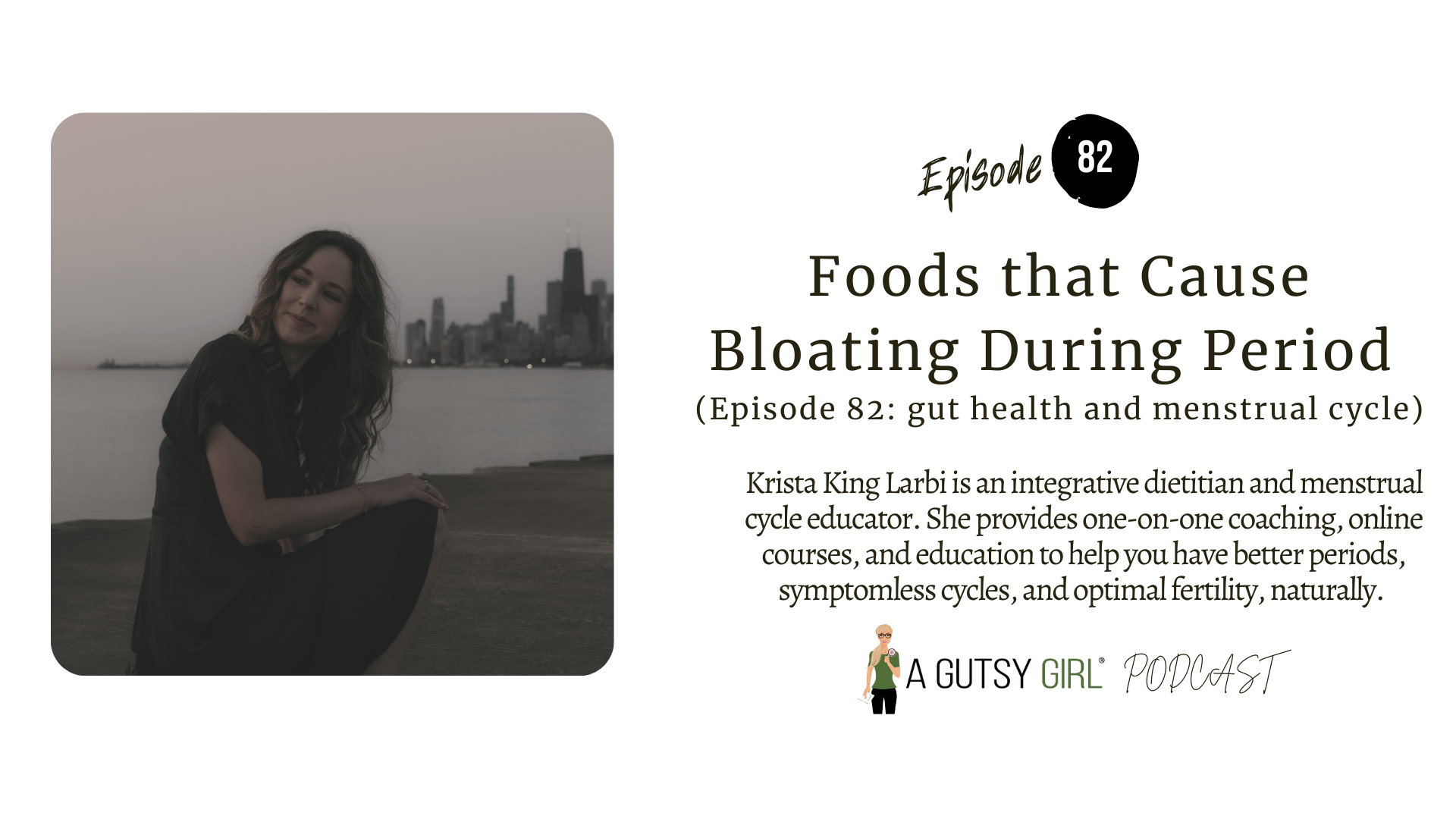Where is quinoa in the grocery store? How about the brown rice? What do you think about the bulk section? How to grocery shop for gut health in general?
One common aspect of gut healing that many people fail to recognize is the actual PROCESS of buying and purchasing the necessary supplements, foods, and other healing aids.
When I started my own healing journey I was surprised to know that I did not know how and where to find the foods that would support my healing.
Today I am going to be taking you on a little tour of the grocery store as well as provide some tips on how to choose foods that support your journey.
p.s. Want some extras to accompany this post? I recorded a short podcast episode all about what I personally typically buy when I go to the grocery store. Ready to listen in?
Subscribe Today:
Apple Podcasts | Spotify | iHeart Radio | RSS
Resources
- Thrive Market
- Wild Pastures (Get 20% off every box for life using my link.)
- Daily Harvest (Use code ‘AGUTSYGIRL’ to save UP TO $65 off your first box.)
- Sourdough Bread
- My Costco Grocery Cart
- Walmart Edition Gutsy Finds
- Target Edition Gutsy Finds
- The Gutsy Bundle
- Healing Blooms from Within (90-day gut healing journal)
- A Gutsy Girl’s Bible
Don’t Miss These Thoughts
- Aisle-by-aisle grocery shopping with A Gutsy Girl
- Where I purchase grocery items that can’t be found in our local grocery store
How to Shop
One of my favorite ways to shop in grocery stores is to stay on the perimeter of the store.
Because this is a suggestion you have likely heard multiple times, let me quickly share with you exactly what I mean when I say, “perimeter of the store.”
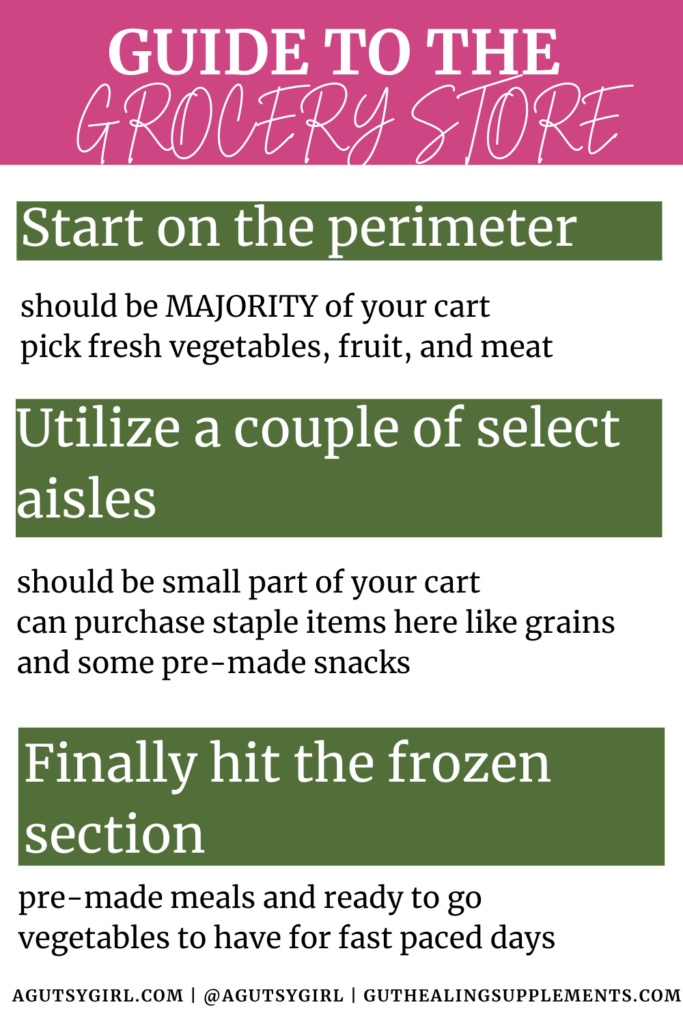
Perimeter of the Store
N. the continuous line forming the boundary of a closed geometric figure.
In this case, the closed geometric figure consists of each individual aisle (yes, even the natural foods aisle!) So, the perimeter is everything outside of that.
Oftentimes this is where you will find all of the fresh and unprocessed foods, such as ripe fruits, vegetables, and fresh meat and bread.
They are often in their raw form, which is the best for your body as a whole. These are the food that should make up the majority of your grocery basket if you are looking to bump up your gut health.
Some of my favorite items found in the perimeter of the store are:
- berries- strawberries, raspberries, and blueberries: all have high amount of phytochemicals and are lower in sugar which can be helpful for preventing inflammation
- greens- arugula, spinach, lettuce, and Brussels sprouts: while Brussels sprouts can be a bit hard on the gut I have had success cooking them in olive oil to break down some of the harder to digest components
- vegetables- squash, bell peppers, carrots: all of these are great staples to cook and put into a soup or salad
- fresh meat- sliced turkey and chicken breast: both great sources of protein and can be saved in the freezer until use, chicken is the best option for a lean protein source extremely high in protein
- fish- salmon: perfect source of protein and high in omega-3 fatty acid chains
- dairy section: almond milk, coconut yogurt, eggs, boiled eggs: try to pick products that contain no “gums” or other added ingredients
- bulk bin section – the bulk bin area is typically on the perimeter (though not always) and again provides bulk quantities in their whole state (mostly and usually)
Of course I recommend finding the foods that make YOU feel the best, but these are some of my staples.
Make sure you eat a wide range of fruits and vegetables if you can tolerate them to support your gut microbiome.
Aisle Shopping
Once you finish on the perimeter, you can go down a couple of aisles to get some products you may still need.
This can include some grains, pre-prepared snacks, and coffee / tea (if you tolerate it).
Some of my favorite purchases on the aisles include:
- coconut oil: oil aisle, great addition to any meal as it has both anti-parasitic and anti-bacterial properties
- quinoa: on the aisle with rice and other grains, one of my favorite staple grains and is high in fiber
- white rice: another rice aisle item, can be easier on the gut than other grains
- rice noodles: normally on the pasta aisle, great gluten-free alternative
- beef bars like THIS one: on the aisle with granola bars, a great source of protein for on-the-go days
- fruit pouches: normally paired with granola bars, another on-the-go snack
- gluten-free cereals: found on cereal aisle or gluten-free aisle, look for products that are low in sugar and other added ingredients such as THIS one
All of these items are great to have on hand for an easy dinner or snack.
This should form the minority of your cart, as most should be fresh produce.
These items are slightly more processed and have less nutritional value than whole foods.
Frozen Section
Lastly, you can go to the frozen aisle for some last-minute back-up meals.
These are great to have on hand in case you are running behind and don’t have the time to cook a full-blown meal.
- pre-cooked gluten-free and dairy-free meals- found in the frozen section, obviously not a first choice but can be good for last-minute meals
- frozen meatballs and sausage- also found in the frozen section, another easy option if you do not have enough time to cook
- frozen vegetable- microwaveable and convenient
Frozen foods are a good way to ensure you are still eating healthy food, even in a pinch.
Bulk Section
Quinoa, which is the specific item we are going to talk about next, is an item that can be found in the bulk section.
I’m frequently asked about the bulk bins; what are they? Are they clean enough and “safe?” What do you get from them?
The answers are as follows:
- A bulk bin contains bulk amounts of any given item. Sometimes the items are whole food ingredients (aka quinoa) and other times the bin itself is made up of a concoction like “trail mix.” The bulk bin section contains small baggies and/or an airtight container of sorts that you fill on your own. Upon filling, you weigh each item with the scale provided in the section, then indicate what item it is with a label / number and take with you to checkout.
- During the virus era, the bulk bin section shut down. However, yes they are clean and safe because they are heavily monitored for cleanliness and safety. That said, if you have any severe food allergy and/or Celiac Disease, this might not be the best place to get your grocery items.
- Personally, I purchase the following from bulk bins:
- quinoa
- whole grains like rice and other similar products
- bulk pantry items like baking soda, chia seeds, flaxseeds, sugar, spices, and herbs
- gluten-free products like oats and granola
- beans, peas, and lentils
- treats + DIY trail mix items: dried fruit, chocolate chips, nuts, and seeds
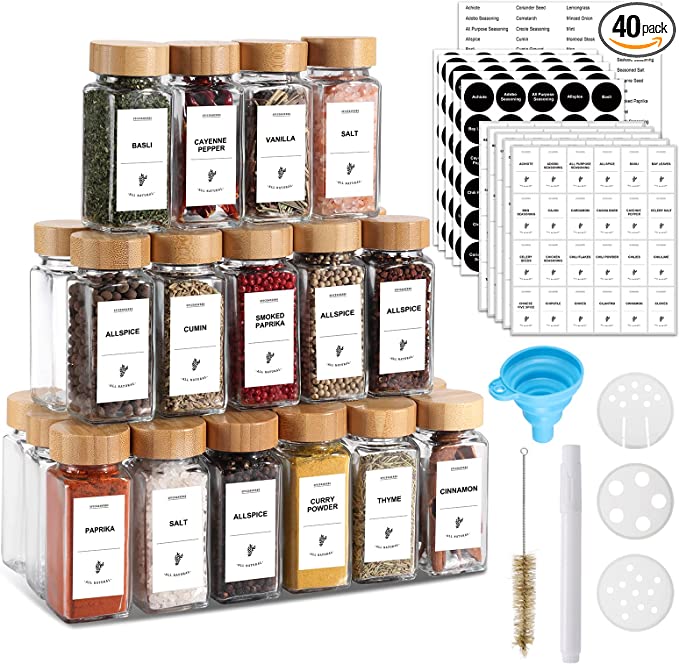
TIP: I have these Amazon 4oz Glass Spice Jars with Labels that come with Bamboo Lids. If you buy dried spices and herbs in bulk, these are incredible!
Where is Quinoa in the Grocery Store [and How to Shop for Gut Health]
Click HERE to save this post for later.
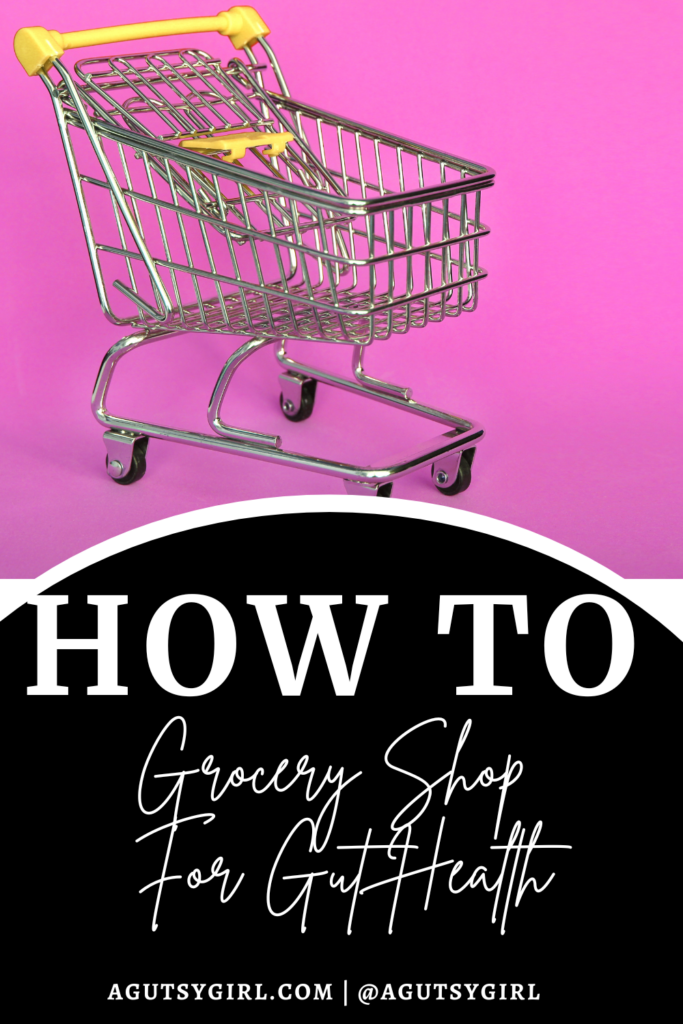
Quinoa is one of my favorite “aisle” items to buy and it is a staple in my house.
Quinoa is a type of seed that is gluten-free, meaning it lacks proteins that can be irritating to anyone with celiac disease or gluten intolerance.
It is often labeled as a “grain,” but it is actually composed of tiny seeds and does not technically fall into that category.
There are several different types of quinoa which depend on their color. Different colors include white quinoa, red quinoa, and black quinoa.
They all have very similar nutrient values, but red quinoa has been found to have the highest levels of antioxidants and be the most beneficial for cardiovascular health.
Here are some of quinoa’s other health benefits:
- full of vitamins and minerals such as vitamin B, magnesium, and iron
- high in fiber- 5 grams of fiber per serving of food
- high in antioxidants- help to reduce overall inflammation in the gut
This food is a staple item in my pantry, due to its gut-healing properties. It not only is full of nutrients but also helps decrease overall inflammation. I often opt for organic quinoa, just to ensure it is as unprocessed as possible.
Note: Quinoa is a pseudo-grain and therefore you’ll find many gut-healing gurus who will tell you to always avoid it. The research says THIS about antinutrients, but remember that my goal is to always help the healing community make the best decisions for you. Quinoa was never a problem for me, and it might not be for you either.
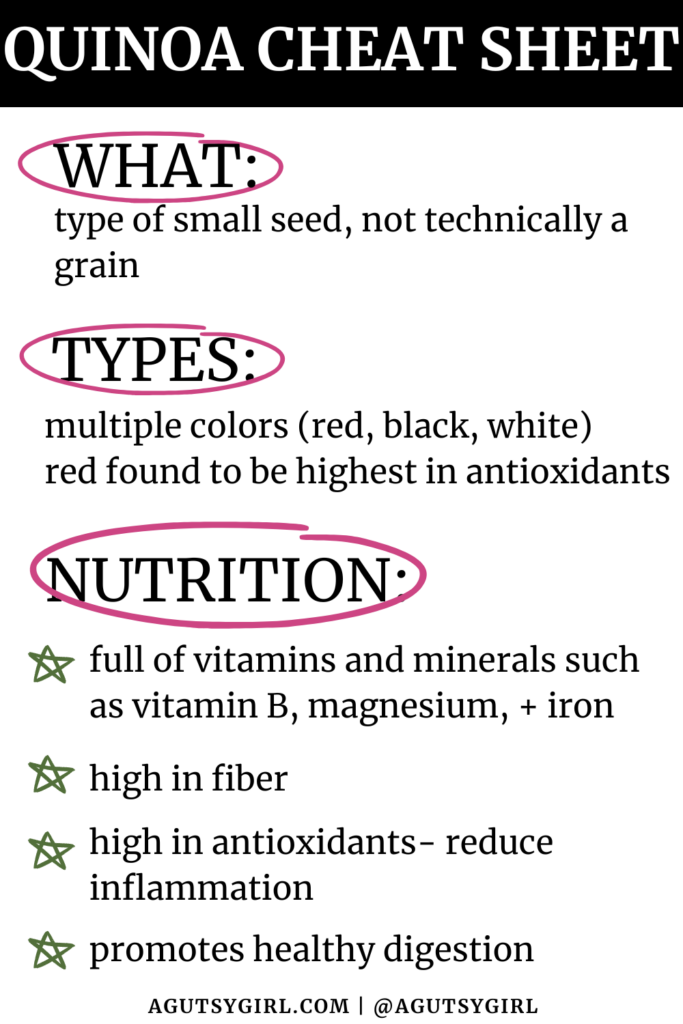
How to Use Quinoa
Quinoa has a slightly nutty taste that is subtle enough to work well in almost any meal. To optimize its flavor, there is a specific way to cook it.
Start by rinsing off your quinoa with cold water. This grain often contains insecticides that can be extremely hard on the gut if not washed off.
To get the optimal fluffy texture of quinoa, it is recommended to use 1.75 cups water for every cup of quinoa. This creates the perfect texture that makes this grain absolutely delicious.
Here are some ways to incorporate quinoa into your meals:
- find a quinoa-based cereal to use in the morning- add almond butter, fruit, and a drizzle of honey
- experiment with quinoa bowls and add other gut-healing ingredients such as cooked veggies, salmon, and some dairy-free cheese
- quinoa-based veggie burgers
- quinoa flour as a substitute in baking or cooking
- pre-cooked quinoa meal (often will contain different varieties of quinoa but may be less nutrient-dense)
- I love my Red Quinoa & Butternut Squash Salad with Homemade Sweet Sage Dressing
- The Daily Harvest Lemon Quinoa + Butternut Squash is incredible! (Use code ‘AGUTSYGIRL‘ to save UP TO $65 off your first box.)
Since it is truly such a versatile product, you can get creative with different ways to incorporate it into your daily diet.
Source: HERE
Why Whole Foods?
The best place to start with gut healing foods is whole foods.
Whole foods are one of the best foods to opt for on your gut-healing journey. They are the most nutrient-dense of any food, due to the lack of processing. This means that the gut can easily absorb these nutrients, which support your entire body.
Whole foods are also higher in vitamins and minerals, which account for most of the body’s ability to carry out functions.
They help regulate the nervous system, endocrine system, and basic functions such as eyesight, muscle movement, and sleep.
By providing your body with the optimal level of nutrients, you give it the tools it needs to properly repair itself. This speeds up your gut-healing journey as well as decreases the time it takes to heal.
Which Grocery Stores?
Honestly, while there is a lot of hype around health food stores, chain supermarkets are just as beneficial IF you know how to shop.
While there are extra benefits and available products at places like Trader Joe’s, Whole Foods Market, Sprouts Farmers Market, and the like, you do not need them to succeed.
Believe me. I live in a town with only a Walmart for a grocery store.
Major grocery stores may not have the healthy items displays as visibly, but if you know what to look for, you will be just as successful.
Sticking to the perimeter of the store works for most grocery stores, no matter which kind it may be.
If you do have a health food store near you, that works too! However, a lot of the products they offer as “healthy” are still extremely processed, so aim for the same ratio of processed vs. unprocessed food choices.
Smaller independent stores may have some items such as granola bars and treats that are fairly fresh, so you can also experiment with those if you want to!
I have seen some recent development in the idea of an online store. Companies such as Amazon are offering online stores for buying produce and other fresh ingredients.
I would personally recommend going in person, just so you can consider all of the options, but again this is not reality for everyone (HI — me, included!)
The short answer is this- any food store can be a good food store if you use the right shopping techniques.
I hope you found today’s tour through the grocery store helpful. Comment down below if you need help with anything relating to shopping or finding healthier alternatives in the stores.
If you liked this post, you might also enjoy:
- How Long Does Coconut Flour Last {+ 16 other things to know about coconut flour}
- Prepared Pantry {Stocking a Healthy Pantry}
- Small Town Grocery Shopping Part Two
Xox,
SKH
Janie Greene is






